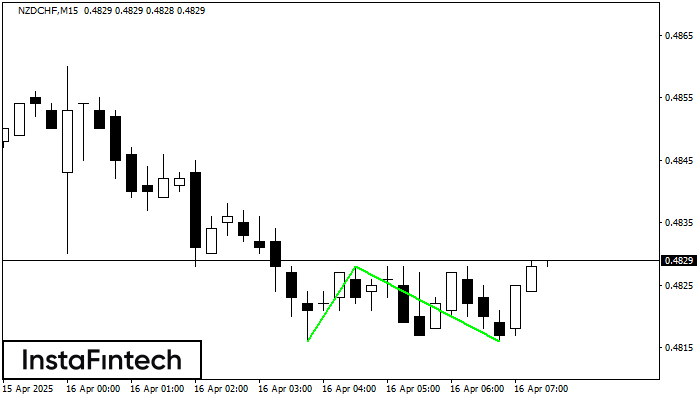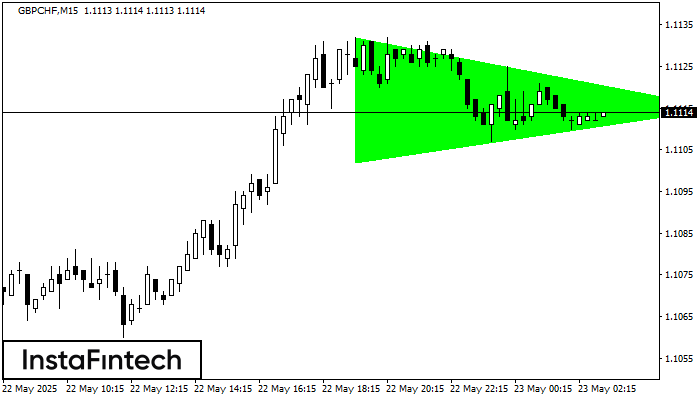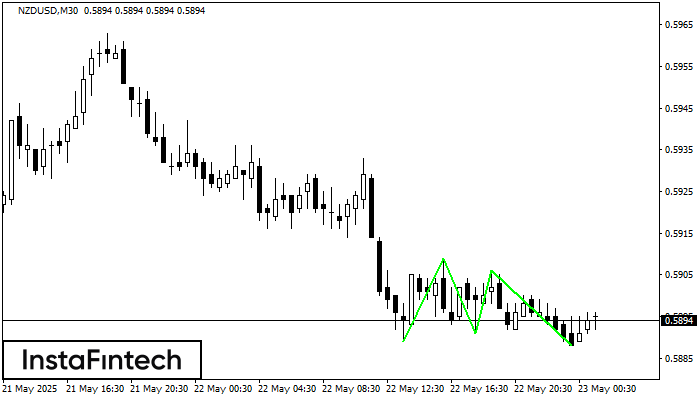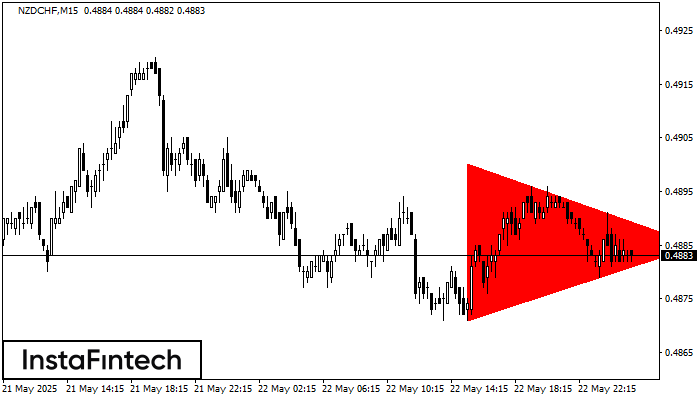Double Bottom
was formed on 16.04 at 06:31:16 (UTC+0)
signal strength 2 of 5

The Double Bottom pattern has been formed on NZDCHF M15; the upper boundary is 0.4828; the lower boundary is 0.4816. The width of the pattern is 12 points. In case of a break of the upper boundary 0.4828, a change in the trend can be predicted where the width of the pattern will coincide with the distance to a possible take profit level.
The M5 and M15 time frames may have more false entry points.
- All
- All
- Bearish Rectangle
- Bearish Symmetrical Triangle
- Bearish Symmetrical Triangle
- Bullish Rectangle
- Double Top
- Double Top
- Triple Bottom
- Triple Bottom
- Triple Top
- Triple Top
- All
- All
- Buy
- Sale
- All
- 1
- 2
- 3
- 4
- 5
Triángulo Simétrico Alcista
was formed on 23.05 at 02:01:08 (UTC+0)
signal strength 2 of 5
Según el gráfico de M15, GBPCHF formó el patrón Triángulo Simétrico Alcista, que señala que la tendencia continuará. Descripción. El límite superior del patrón toca las coordenadas 1.1132/1.1115 donde
Los marcos de tiempo M5 y M15 pueden tener más puntos de entrada falsos.
Open chart in a new window
Triple Piso
was formed on 23.05 at 01:00:13 (UTC+0)
signal strength 3 of 5
El patrón Triple Piso ha sido formado en el gráfico de NZDUSD M30. Características del patrón: línea inferior del patrón tiene coordenadas 0.5909 con el límite superior 0.5909/0.5906, la proyección
Open chart in a new window
Triángulo Simétrico Bajista
was formed on 23.05 at 00:42:21 (UTC+0)
signal strength 2 of 5
Según el gráfico de M15, el NZDCHF formó el patrón Triángulo Simétrico Bajista. Recomendaciones de negociación: es posible que una ruptura del límite inferior 0.4871 fomente una continuación
Los marcos de tiempo M5 y M15 pueden tener más puntos de entrada falsos.
Open chart in a new window




















